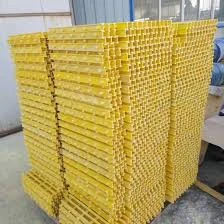
-
 Afrikaans
Afrikaans -
 Albanian
Albanian -
 Amharic
Amharic -
 Arabic
Arabic -
 Armenian
Armenian -
 Azerbaijani
Azerbaijani -
 Basque
Basque -
 Belarusian
Belarusian -
 Bengali
Bengali -
 Bosnian
Bosnian -
 Bulgarian
Bulgarian -
 Catalan
Catalan -
 Cebuano
Cebuano -
 China
China -
 China (Taiwan)
China (Taiwan) -
 Corsican
Corsican -
 Croatian
Croatian -
 Czech
Czech -
 Danish
Danish -
 Dutch
Dutch -
 English
English -
 Esperanto
Esperanto -
 Estonian
Estonian -
 Finnish
Finnish -
 French
French -
 Frisian
Frisian -
 Galician
Galician -
 Georgian
Georgian -
 German
German -
 Greek
Greek -
 Gujarati
Gujarati -
 Haitian Creole
Haitian Creole -
 hausa
hausa -
 hawaiian
hawaiian -
 Hebrew
Hebrew -
 Hindi
Hindi -
 Miao
Miao -
 Hungarian
Hungarian -
 Icelandic
Icelandic -
 igbo
igbo -
 Indonesian
Indonesian -
 irish
irish -
 Italian
Italian -
 Japanese
Japanese -
 Javanese
Javanese -
 Kannada
Kannada -
 kazakh
kazakh -
 Khmer
Khmer -
 Rwandese
Rwandese -
 Korean
Korean -
 Kurdish
Kurdish -
 Kyrgyz
Kyrgyz -
 Lao
Lao -
 Latin
Latin -
 Latvian
Latvian -
 Lithuanian
Lithuanian -
 Luxembourgish
Luxembourgish -
 Macedonian
Macedonian -
 Malgashi
Malgashi -
 Malay
Malay -
 Malayalam
Malayalam -
 Maltese
Maltese -
 Maori
Maori -
 Marathi
Marathi -
 Mongolian
Mongolian -
 Myanmar
Myanmar -
 Nepali
Nepali -
 Norwegian
Norwegian -
 Norwegian
Norwegian -
 Occitan
Occitan -
 Pashto
Pashto -
 Persian
Persian -
 Polish
Polish -
 Portuguese
Portuguese -
 Punjabi
Punjabi -
 Romanian
Romanian -
 Russian
Russian -
 Samoan
Samoan -
 Scottish Gaelic
Scottish Gaelic -
 Serbian
Serbian -
 Sesotho
Sesotho -
 Shona
Shona -
 Sindhi
Sindhi -
 Sinhala
Sinhala -
 Slovak
Slovak -
 Slovenian
Slovenian -
 Somali
Somali -
 Spanish
Spanish -
 Sundanese
Sundanese -
 Swahili
Swahili -
 Swedish
Swedish -
 Tagalog
Tagalog -
 Tajik
Tajik -
 Tamil
Tamil -
 Tatar
Tatar -
 Telugu
Telugu -
 Thai
Thai -
 Turkish
Turkish -
 Turkmen
Turkmen -
 Ukrainian
Ukrainian -
 Urdu
Urdu -
 Uighur
Uighur -
 Uzbek
Uzbek -
 Vietnamese
Vietnamese -
 Welsh
Welsh -
 Bantu
Bantu -
 Yiddish
Yiddish -
 Yoruba
Yoruba -
 Zulu
Zulu
Insights on GRP Chimney Innovations and Applications in Modern Construction
The Importance of GRP Chimneys in Modern Construction
In the realm of modern construction, efficiency and sustainability have taken center stage. One of the innovations that has emerged in recent years to support these goals is the use of Glass Reinforced Plastic (GRP) in chimney systems. GRP chimneys have gained popularity due to their unique properties, making them a preferred choice for a variety of applications in both residential and commercial buildings.
Understanding GRP
Glass Reinforced Plastic, often referred to as fiberglass, is a composite material made from a polymer matrix reinforced with glass fibers. This combination results in a material that is incredibly strong, lightweight, and resistant to a variety of environmental factors, such as corrosion and thermal expansion. These properties make GRP an ideal material for chimney construction, allowing for designs that were previously not feasible with traditional materials like brick, concrete, or metal.
Advantages of GRP Chimneys
1. Corrosion Resistance One of the most significant advantages of GRP chimneys is their resistance to corrosion. Traditional materials can degrade over time due to exposure to acidic flue gases, especially in industrial settings. In contrast, GRP can withstand these harsh conditions, ensuring a longer service life and reducing maintenance costs.
2. Lightweight and Easy to Install GRP chimneys are considerably lighter than their masonry counterparts, making them easier to transport and install. This can significantly decrease labor costs and time during the construction phase, allowing projects to progress more quickly.
The Importance of GRP Chimneys in Modern Construction
4. Thermal Insulation GRP chimneys offer excellent thermal insulation properties. This means that they can maintain temperature more efficiently, reducing the risk of condensation within flue systems. Proper insulation also contributes to the overall energy efficiency of a building.
grp chimney

5. Fire Resistance Although some may be concerned about the fire resistance of composite materials, GRP is developed to meet stringent safety standards. This includes self-extinguishing properties and the ability to withstand high temperatures, making it a safe choice for chimney systems.
Applications in Various Sectors
GRP chimneys are used in a variety of sectors, including residential, commercial, and industrial settings. In residential applications, they can be found in homes with heating systems that require efficient flue systems to vent combustion gases. In commercial settings, such as restaurants or factories, GRP chimneys effectively manage the exhaust from kitchen hoods or industrial boilers.
Moreover, the automotive and aerospace industries are leveraging GRP for exhaust systems due to its lightweight and strength properties, enhancing performance and efficiency.
Environmental Impact
As sustainability becomes a crucial factor in construction, the environmental benefits of GRP chimneys cannot be overlooked. Their longevity reduces the need for frequent replacements, and their lightweight nature means lower transportation emissions. Additionally, many GRP products are designed to be recyclable, further contributing to eco-friendly practices in construction.
Conclusion
In conclusion, GRP chimneys represent a significant advancement in the field of construction. Their unique properties make them a reliable and efficient choice for modern building needs, addressing many challenges posed by traditional materials. As the construction industry continues to evolve, integrating innovative solutions like GRP chimneys will be vital in promoting sustainability and enhancing the capabilities of architectural designs. The adoption of GRP technology is not just a trend; it is a necessary step towards a more efficient and sustainable future in construction.









